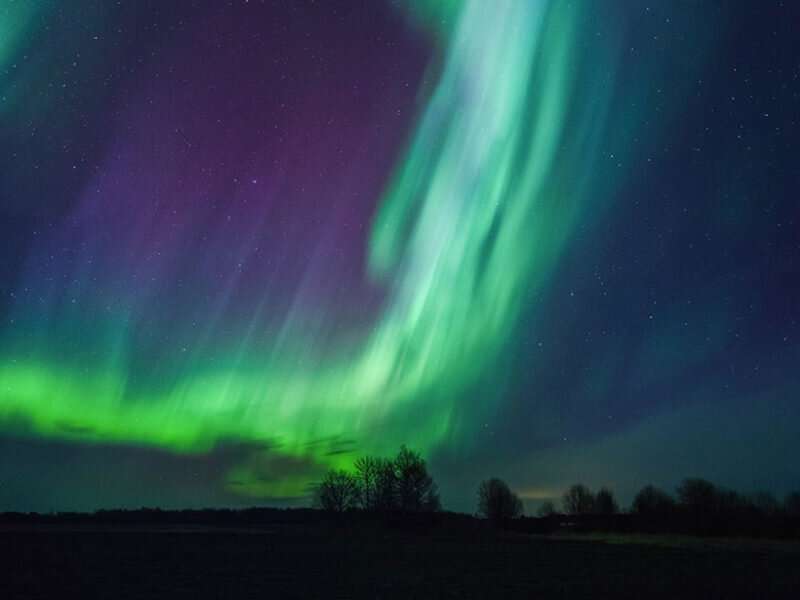The Super Dual Auroral Radar Network tracks ionospheric plasma circulation from the ground, including auroral activity like this in Estonia. Credit: Kristian Pikner, CC BY-SA 4.0
When solar wind slams into Earth's magnetic field, the impacts ripple down through the planet's ionosphere, the outer shell of the atmosphere full of charged particles. A global array of high-frequency radars known as the Super Dual Auroral Radar Network (SuperDARN) tracks ionospheric plasma circulation from the ground, giving researchers insights into the interactions between solar wind, the magnetosphere, and the ionosphere. Though widely used in space physics research, the network is not comprehensive—each ground-based radar can measure plasma velocity only in its line-of-sight direction, for example. As a result, there are major spatial and temporal gaps in the SuperDARN archive.
Historically, researchers have filled in these gaps with models that make assumptions based either on climatological averages of the SuperDARN data or on solar wind measurements. In a new study, Shore et al. present a new method using a data-interpolating empirical orthogonal function technique, which allows researchers to detect patterns within existing SuperDARN plasma velocity data and then use this information to fill in gaps. The team used observations collected by the network's Northern Hemisphere stations in February 2001 and filled in missing information at any given time using the velocity patterns deduced from data collected at a given location throughout the month and from other network locations at the same time.
The SuperDARN data set is critical for understanding space weather and its potential impacts on the technologies underlying things like radio communications and satellite services, and this new technique can provide researchers with the most accurate estimates yet of ionospheric electrodynamic variability.
More information: R. M. Shore et al, Data‐Driven Basis Functions for SuperDARN Ionospheric Plasma Flow Characterization and Prediction, Journal of Geophysical Research: Space Physics (2021). DOI: 10.1029/2021JA029272
Provided by American Geophysical Union
This story is republished courtesy of Eos, hosted by the American Geophysical Union. Read the original story here.
























